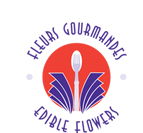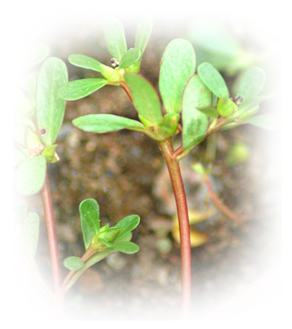Purslane, Pigweed,
Pourpier Gras
|
|
| Portulaca oleracea
Portulacaceae
Legend and Lore Purslane is a good edible and is eaten throughout much of Europe, Egypt and Asia. It can be eaten fresh or cooked and has no bitter taste at all. Since it has a mucilaginous quality it is great for soups and stews and a substitute for spinach. Research shows that purslane contains more Omega-3 fatty acids than any other leafy vegetable plant we know of. The most common dietary source of Omega-3s are cold water fish like Salmon In Latin Portulaca.-. portare, is to carry and lac, milk, referring to the milky sap. oleracea... pertains to a vegetable garden herb used in cooking. In ancient times it was considered as one of the anti-magic herbs, and strewn around a bed to protect against evil spirits. If placed on the bed it protected the person from having nightmares. It was supposed to protect from evil spirits and if carried was supposed to attract love and luck. It was carried by soldiers as protection during battle. In the Garden Prefers well drain soil in full sun. Self sows freely! Leaves are thick, fleshy and spoon shaped up to 3 cm in length, mostly alternate except on the tip where they are crowded together. Stems are thick, reddish green, branching off forming a circular mat. Small yellow flowers with 4 to 6 petals produced in the summer. |
|



